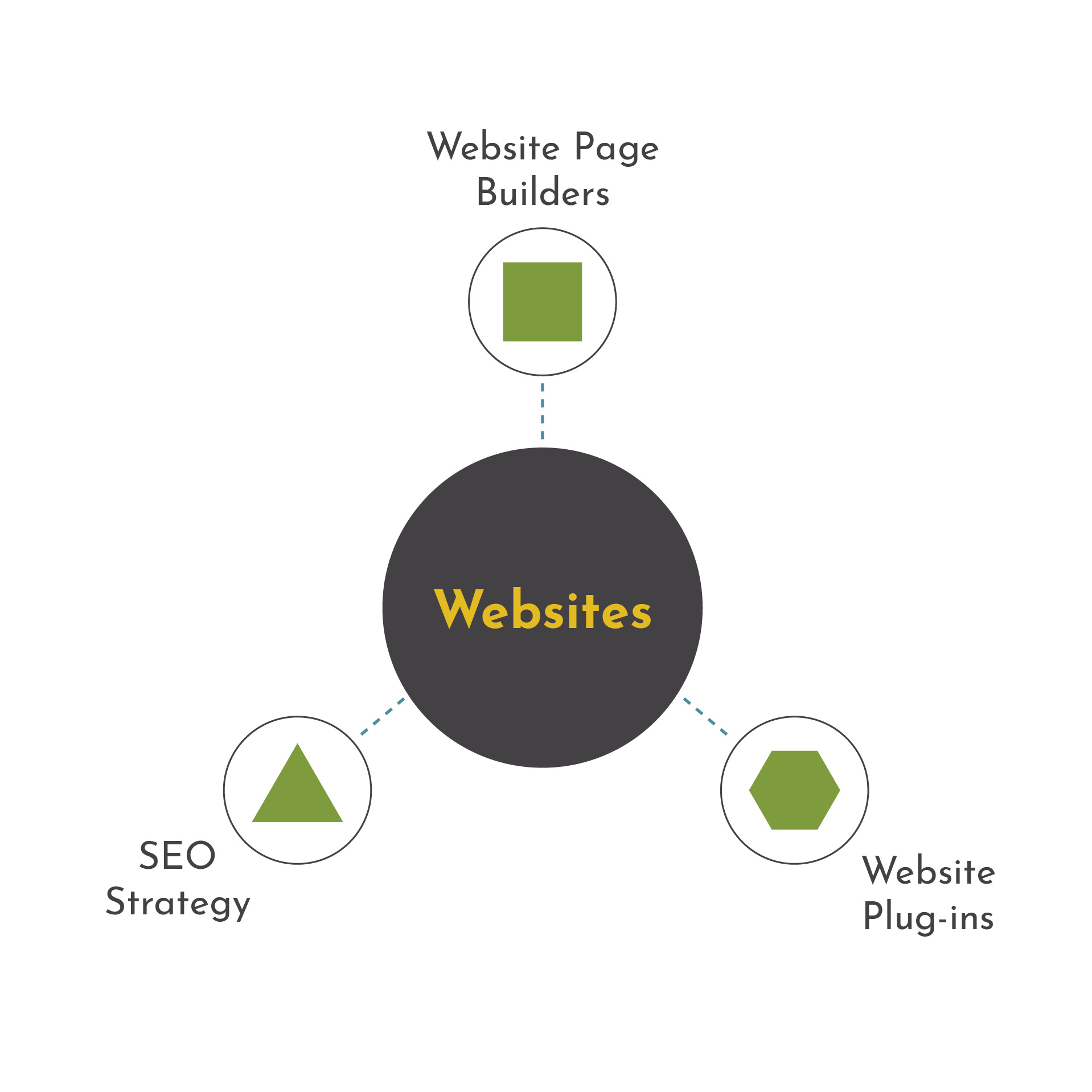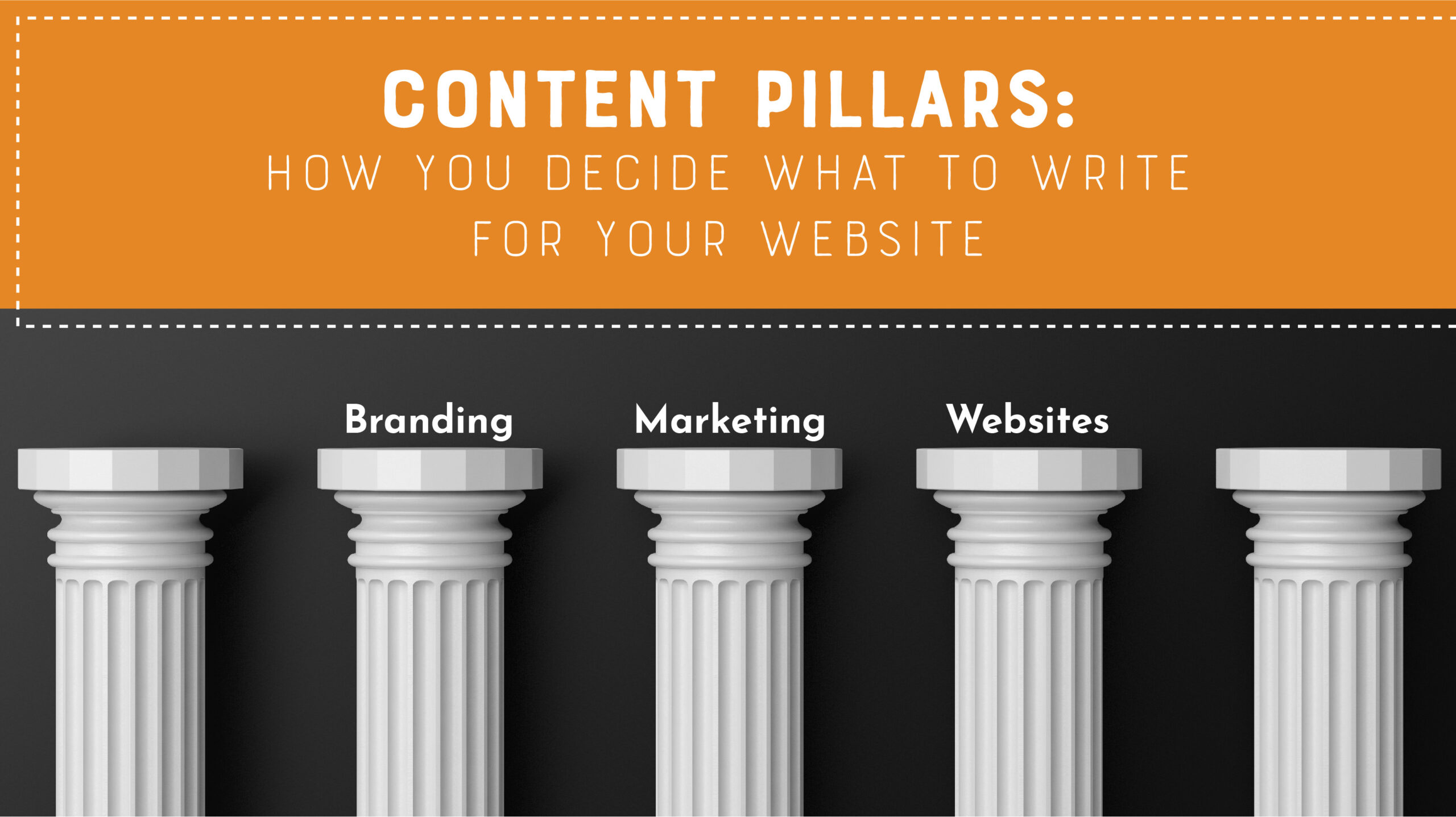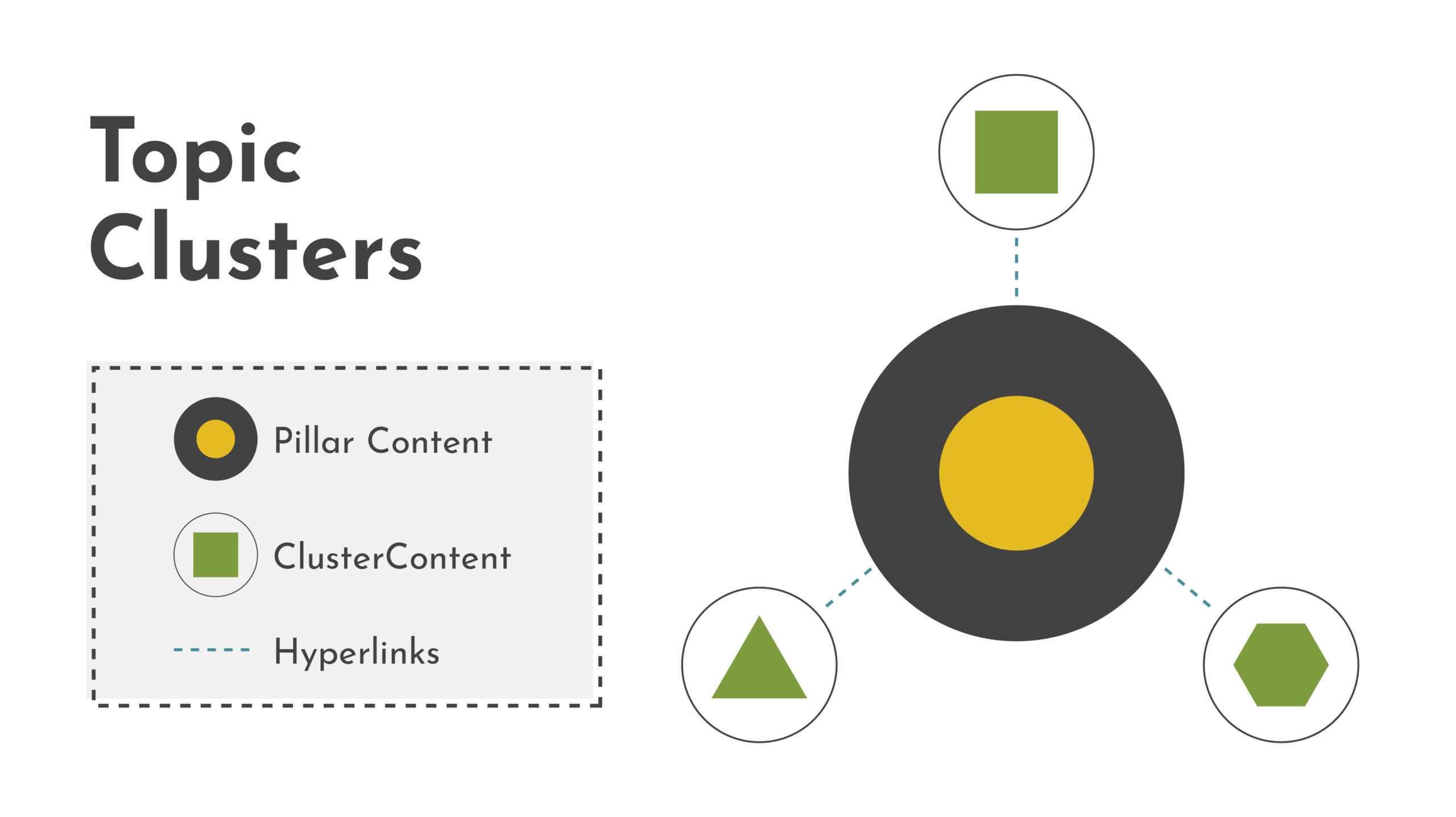Search engines and the way people use them have been changing quite a bit over the last few years and at a rapid pace. As these changes unfold, the way we think about marketing our businesses and our content strategies must also change in order to keep up. This is especially true for the way we think about keywords, the content we produce, and how we organize it on our websites. That’s where the idea of topic clusters and content pillars come into play.
What are Topic Clusters and Content Pillars?

HubSpot says it best. “The basic premise behind building a topic cluster content program is to enable a deeper coverage across a range of core topic areas, while creating an efficient information architecture in the process.” In essence, the topic cluster model works by choosing the broad topics you’d like your site to rank for on search engines and then creating content around the specific keywords or keyword phrases related to the topic that connect to one another. This model allows you to strengthen your search engine authority while also better managing internal linking between the different pages of your website.
Content pillars, sometimes referred to as pillar pages, are the broader overview of a specific topic. Think of them as summary pages. You can (and should) create pillar pages for your organization’s major focus areas.
Pillar pages are usually longer than your average blog post because they need to touch on all the aspects of the topic for which you want to rank for on search engines. These pages should help answer the questions someone may have about the topic at hand, but also allow for more detailed content to be produced later on as subsequent cluster content. On a pillar page, you will then link out to the content that covers a more specific subtopic (aka cluster content). When you think of your cluster content, each cluster content page should give more detail for the long-tail keyword(s) related to the main topic. Each cluster page should also link back to the pillar page with the same hyperlinked keyword.
What Does the Content Pillar and Cluster Content Model Look Like?
Think of this model of content like this: you have one longer piece that is the 101 broad overview or introduction to the core topic. That is your pillar content. The subsequent supporting articles you produce allow you to deep dive into the subtopics or cluster content that you then link back to the pillar page and vice versa.
Getting Started with Content Pillars and Cluster Content
Now that you have an idea of how this model of content creation works, it’s time to start applying it as you decide what to write and produce for your website. If you want some help getting started, request a content strategy session with members of our team, or subscribe to our blog for more helpful information and tips.



